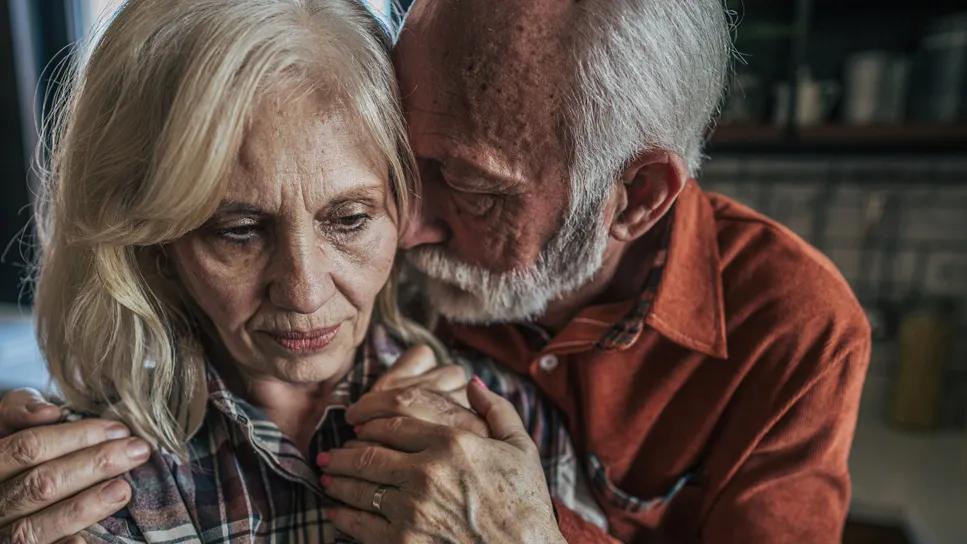Multidisciplinary approach helps address clinical and psychosocial challenges in geriatric care

An 80-year-old man presents to the emergency department with increased fatigue and confusion. He resides in a nursing home and has a history of GOLD Group E COPD, chronic respiratory failure requiring supplemental oxygen, obstructive sleep apnea, heart failure with preserved ejection fraction, benign prostatic hyperplasia (BPH), vascular dementia and anxiety.
Advertisement
Cleveland Clinic is a non-profit academic medical center. Advertising on our site helps support our mission. We do not endorse non-Cleveland Clinic products or services. Policy
Despite the patient’s ongoing health concerns, both he and his family have hesitated to pursue palliative care options. Of note, the patient previously requested bronchoscopic lung-volume reduction to prevent recurrent hospitalizations for his COPD exacerbations, but he was deemed too unstable for the procedure.
The patient received an infectious disease workup, which was normal. His worsening symptoms were ultimately attributed to nonadherence to his BiPAP machine, sleep disturbances, nocturia and polypharmacy.
Frustrated by the presumed lack of care he had been receiving for his comorbidities, his family requested hospital admission over the patient’s objections.
Cleveland Clinic geriatrician Luke Dogyun Kim, MD explains that the family’s distrust of the patient’s long-term care facility was prompting frequent – and potentially unnecessary – hospitalizations. Not only were these episodes exposing the patient to a spectrum of risks, including hospital-acquired infections and functional decline, but they were also causing the patient significant distress.
“Older nursing home residents with complex chronic conditions often struggle when deciding between disease-oriented interventions and palliative care,” explains Dr. Kim, who presented the case at the 2025 Annual Meeting of the American Geriatrics Society. “These issues are exacerbated when family members lack medical literacy or harbor distrust toward the healthcare system or a particular provider. This was particularly true in this case, where the family’s suspicion of the patient’s nursing home caregivers was muddying the water, leading to unnecessary interventions and compromising their loved one’s quality of life.”
Advertisement
A multidisciplinary team, including a geriatrician, physical therapist, case manager and several nurses met to discuss the patient’s unified goals of care.
The case manager arranged to provide the patient with a more suitable, better-fitting BiPAP mask. To avoid polypharmacy, his medications were reviewed and redundant BPH medications were eliminated. The nursing home team was educated on the administration of morphine and lorazepam to manage the patient’s dyspnea and anxiety, thereby improving his comfort and reducing symptoms. Breathing treatments were also increased to reduce the risk of COPD exacerbations. Finally, a physical therapist implemented a fall-prevention program focused on strengthening and gait-stability exercises.
These interventions significantly improved the patient’s fatigue, sleep quality and baseline functional status. By prioritizing transparent communication and involving the family in care decisions, the medical team was able to align their strategies with the patient’s preferences and build trust with his family members.
“This case demonstrates the effectiveness of a multidisciplinary approach in addressing the clinical and psychosocial challenges of nursing home care,” Dr. Kim says. “By enlisting the support of a variety of medical disciplines, the team was able to provide truly patient-centered care.”
Medical mistrust can stem from a number of complex and highly personal factors, including traumatic medical experiences, maladaptive beliefs and behaviors, and systemic inequalities, Dr. Kim says.
Advertisement
“Unfortunately, these dynamics can lead to consequences like delays in care and suboptimal health outcomes,” he notes.
Dr. Kim explains that rebuilding trust requires clinicians to acknowledge and learn about the patient’s individual and family history, communicate clearly and honestly, and advocate for systemic changes that promote fairness and engagement. In addition, he encourages providers to understand the intergenerational factors that can come into play when managing geriatric patients.
“Caring for older adults means caring for their families as well, and trust is the bridge that connects both,” he says. “Families need to feel that their voices are heard and their loved one’s dignity is protected. Building that trust takes time and intention, but it becomes the foundation that allows families, patients and clinicians to navigate profoundly complex decisions together.”
Advertisement
Advertisement

Effective screening, advanced treatments can help preserve quality of life

Study suggests inconsistencies in the emergency department evaluation of geriatric patients

Auditory hallucinations lead to unusual diagnosis

How providers can help prevent and address this under-reported form of abuse

How providers can help older adults protect their assets and personal agency

Recognizing the subtle but destructive signs of psychological abuse in geriatric patients

Early screening — and shorter boarding times — benefit older adults

Even subtle red flags can portend serious risks for older victims